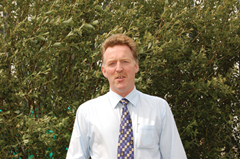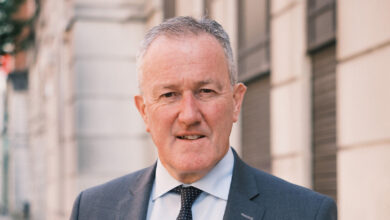A bright future for agriculture
 Growing populations, rising prices and our export contacts combine to make a real good news story for local farmers. Richard Halleron describes farming’s upbeat prospects.
Growing populations, rising prices and our export contacts combine to make a real good news story for local farmers. Richard Halleron describes farming’s upbeat prospects.
Newly-elected Ulster Grassland Society President Norbury Royle hit the nail on the head when he told those attending the organisation’s recent annual conference that agriculture has the potential to lead the rest of the local economy out of recession. The reality is that farming and food traditionally do well in an economic downturn: we all have to eat after all.
Significantly, there are already signs that the potential for agriculture to make a real difference, where job creation is concerned, has already been recognised. A case in point is the fact that demand for all of the training and further education courses offered by Cafre is on the up: ditto with Teagasc in the Republic of Ireland. So young people are again recognising the potential of the farming and food sectors as future career pathways.
The new dynamic within all of this is the presence of a functioning Executive at Stormont. Farm Minister Michelle Gildernew has been a genuine champion of the need to recognise the worth and value of everyone living in the countryside when it comes to maintaining a vibrant rural economy. For his part, Norbury Royle pointed out that farmers are, undoubtedly, the largest contributor to our rural way-of-life, particularly when it comes to spending money. Hence, in his view, the need to ensure that the EU’s Rural Development Programme delivers for agriculture in a truly meaningful way. And if this means looking at the possibility of making additional funds available to the farming sectors, so be it.
At the end of the day, the two main resources available to us here in Northern Ireland are the land and our people. A host of new opportunities will open up over the next few years in terms of how we can put land to better use. This will require new thinking on the part of farmers and continuing investment on their part in the new technologies that will be required to make it all work. The Executive must be in a position to support initiatives of this kind in ways that ensure Northern Ireland is ahead of the pack. Only winners survive in the economy of the 21st century.
The key drivers pushing the farming and the food sectors forward at the present time are the world’s fast growing population and the increasing use of agricultural commodities, including cereals, in green energy production systems.
The growing population trends in the world’s developing nations, including China and India, will ensure a growing demand for locally produced food products and – more importantly – the financial wherewithal to pay for them. For the record, the world’s population is predicted to reach 9 billion by 2050. We are currently at 6 billion.
Another key advantage for Northern Ireland in this fast changing scenario is the local agri-food sector’s traditional reliance on export markets. As a consequence, we already have key contacts around the world to help us convert the growing demand for food and food products into a fruitful reality for our farmers and processers.
And there is ample evidence to confirm that all of this is not just idle speculation. Producer milk prices are currently heading towards the crucially important 30 pence per litre target while cereal, pig and lamb prices are already at record levels. And the good news doesn’t stop there. There are firm indications that local farm gate beef prices are also about to take off.
All of this may not be good news for consumers, given the impact, sooner or later, on retail food prices. Farmers, however, take the view that they have been receiving far too little for their produce since our entry into Europe some forty years ago!
Richard Halleron is an agricultural journalist and regular contributor to business publications on agri-food issues.





